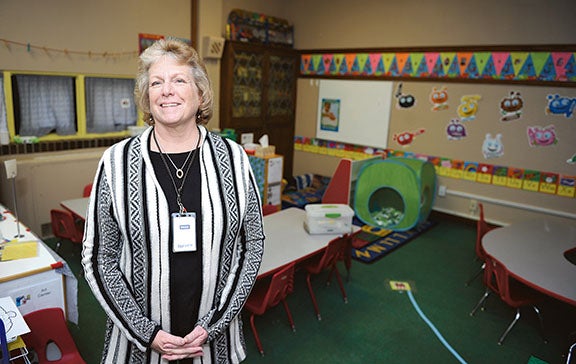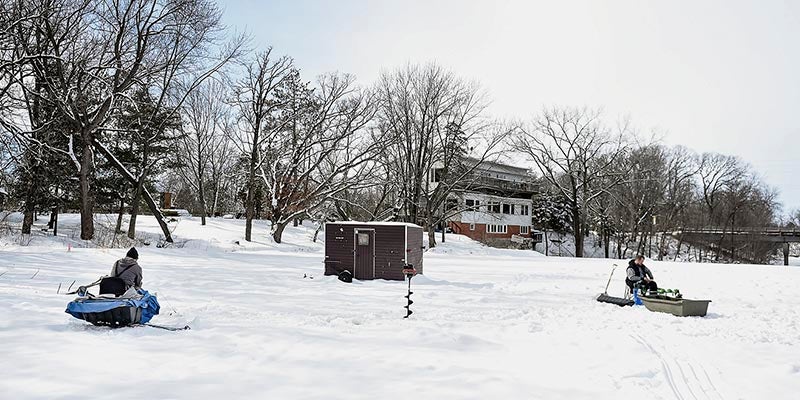Child care shortage deepens in county; Town Hall meeting scheduled Nov. 6 to address issues
Published 7:02 am Sunday, October 15, 2017

- Amy Baskin, director of Austin’s Community Learning Center. Herald file photo.
Working parents are finding it increasingly difficult to find child care for their sons and daughters, an analysis of the region shows. That has prompted local and area officials to search for solutions.
A gap analysis — which compares the number of providers to child numbers — shows that the Austin region is short about 1,650 spaces for children in licensed facilities; of that number, about half of the deficit is in Austin, according to data collected by First Children’s Finance.
There were 138 child care providers counted in the Austin region analysis, in centers or family settings, that provide just over 2,100 slots for children. All communities except one — Lyle — had more children than slots available. Brownsdale led the rural population in Mower County, with the highest shortage of 61. Some of the communities surveyed were in Freeborn or Steele counties.
First Children’s Finance chose the Austin community to participate in its Rural Child Care Innovation Program, a community engagement process designed to develop solutions to address the needs of child care and early education for the communities selected. First Children’s Finance helps facilitate the conversation and provides expertise, tools, and resources to support the creation and implementation of solutions to address child care shortages in rural communities.
A core team of Austin stakeholders, from parents and educators, to business owners and providers, will host a town hall meeting from 6-9 p.m. on Monday, Nov. 6, at the Hormel Historic Home, to address and discuss the challenges, and try to formulate a community action plan.
Amy Baskin, director of the Community Learning Center and Teri Wermager, coordinator of the Kids Korner, a before- and after school child care for preschool and elementary-age students, know well the issues related to child care shortages. There are waiting lists at all of the Kids Korner sites, which include the Austin public elementary schools, the CLC and Woodson Kindergarten Center. All told, there are approximately 370 kids served, said Wermager. The Kids Korner is part of the Community Learning Center’s offerings, which are part of the Austin Public School system.
They said a perfect storm of factors have combined to create the issue. One is low unemployment, which has left some child care providers not being able to find staff; as a result, they have to reduce slots since regulations require a provider-to-child ratio.
The issue is more alarming for parents of infants and toddlers. Providers may only be able, by regulation, to provide child care for one or two infants, or toddlers, depending on the size of the provider’s licensing and operation.
“We even know of two teachers who ended up taking time off because they couldn’t find child care for their children,” Baskin said, adding she did not think it was an unusual situation.
Parents with specialized child care needs — perhaps a language challenge, second and third shift, or weekend jobs, or a special needs child — face more problematic challenges in finding appropriate child care.
A tightening of federal and state child care regulations may prompt some providers to leave the profession. Some of those range from providing more square footage for each child, to adding more training requirements for staff.
“Some just don’t want to go through all the hoops,” Baskin said.
Wermager said lack of full reimbursement for the Child Care Assistance Program has impact as well. The CCAP is an income-based reimbursement program that helps low-income families pay child care costs. The CCAP reimbursement rate of $2.90 an hour but doesn’t always cover the price charged by providers; as a result, the balance is paid by the families who are struggling already.
Kids Korner is just one provider, “and we are in a great position” for meeting regulations, since they are school-based and some requirements have long been in place, Wermager said. She is also able to provide training for staff, whereas other child care settings might have to pay to attend trainings. That cost, too, Wermager said, adds up quickly.
Still, some of the new requirements, including the need to fingerprint staff, and conduct a more intense background check, “will be a huge expense,” said Wermager. What used to be $40 per background check will now cost
$70 for each staff member.
The issue affects more than parents; child-related issues represent 45 percent of employee absenteeism, according to the Rural Child Care Innovation Program, and 65 percent of parents’ work schedules are affected by child care challenges.
It is a reason that Hormel Foods has chosen to be part of the discussion.
On Friday, the company released a statement that said, “As a leading employer in the southern Minnesota area, we know that child care is a one of many key factors for (employment) candidates as they consider where they choose to live and work. As such, we definitely want to be part of the efforts to discuss and research this topic.”
The issue is not unique to Austin, or Mower County.
Nationally, there has been a 27 percent drop in family child providers between 2006 and 2015, according to the Center for Rural Policy and Development, whose Affordable Child Care subcommittee surveyed the problem and released its research last year. The Minnesota-based organization is a non-partisan, not-for-profit policy research organization dedicated to providing its policymakers with unbiased information and evaluation of issues from a rural perspective.
Baskin said solutions to the shortage may be ones not yet thought of by those who have been mulling the issue for some time. She urges anyone with thoughts or issues with child care to attend the town hall meeting.
“We have creative people out there, who may have ideas or solutions that we haven’t thought of,” she said.





